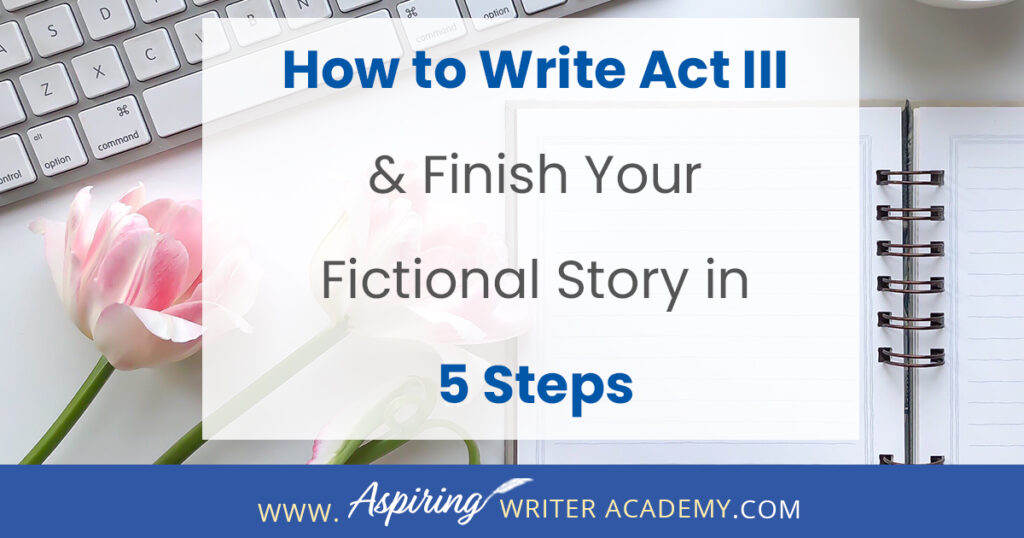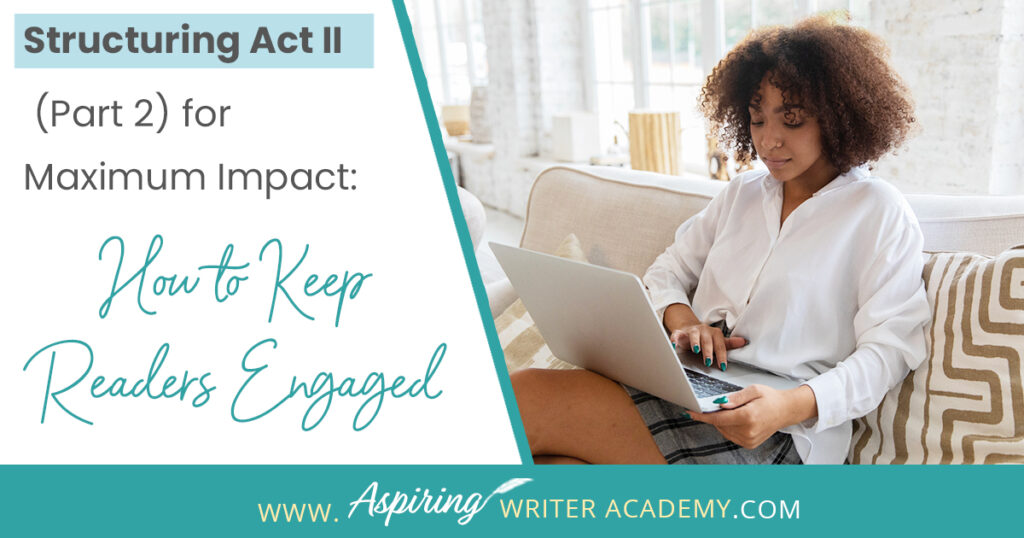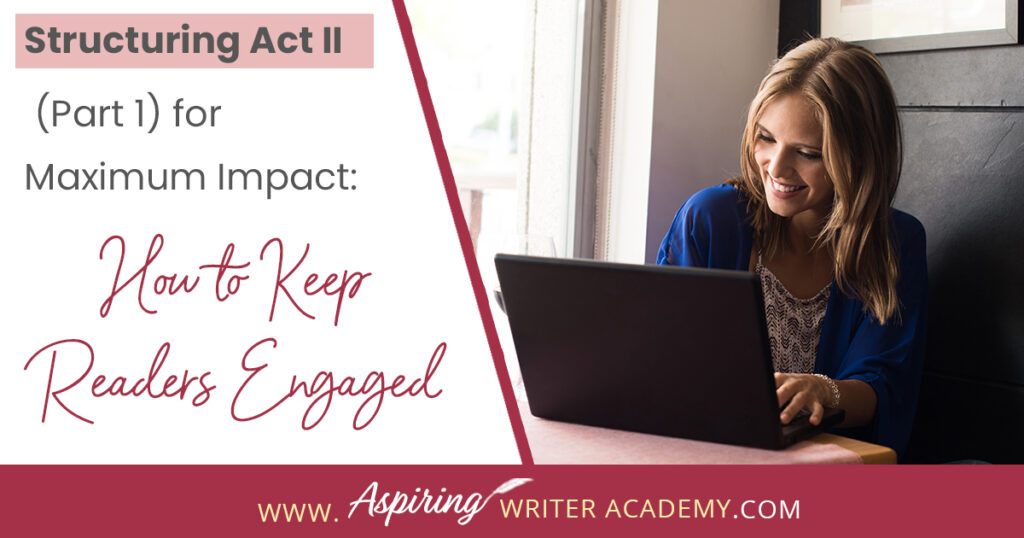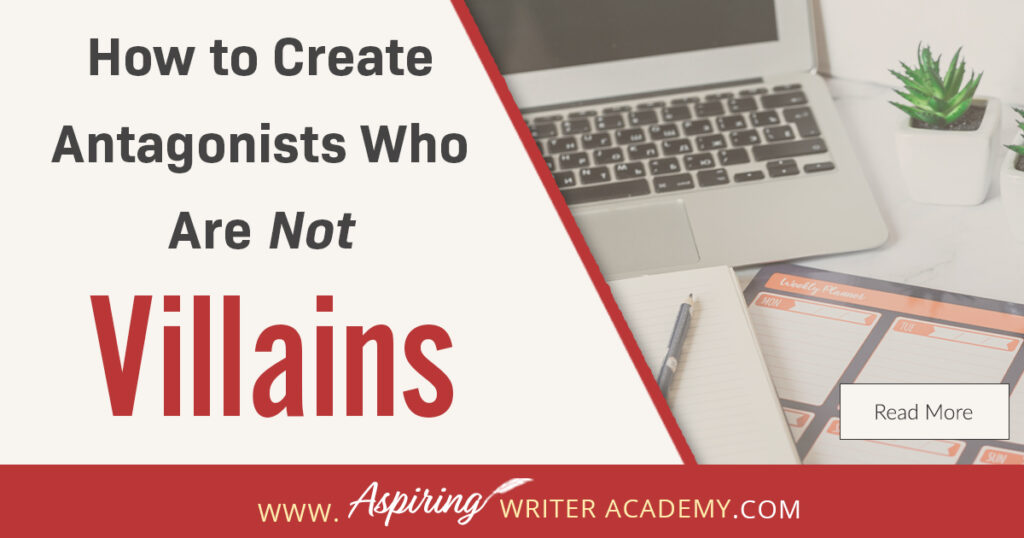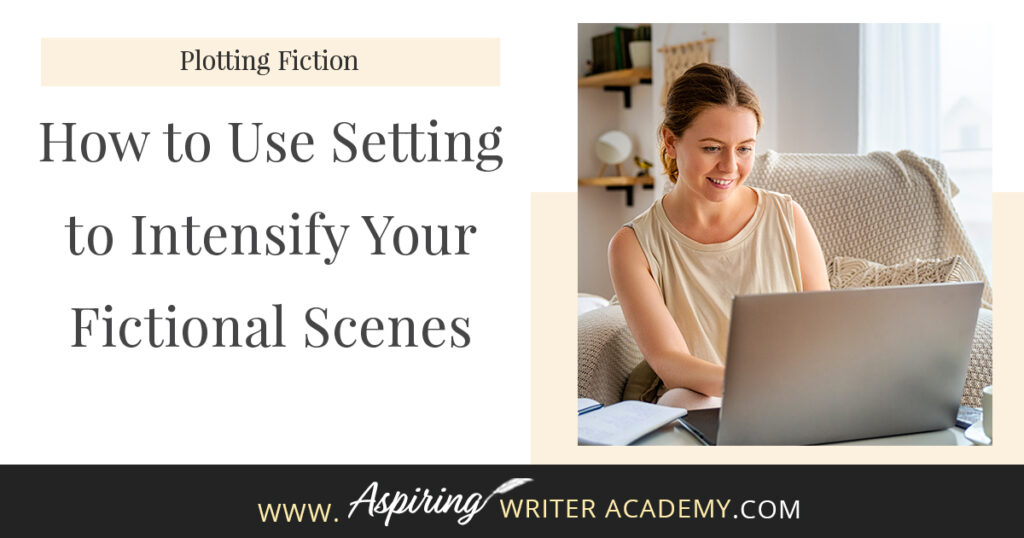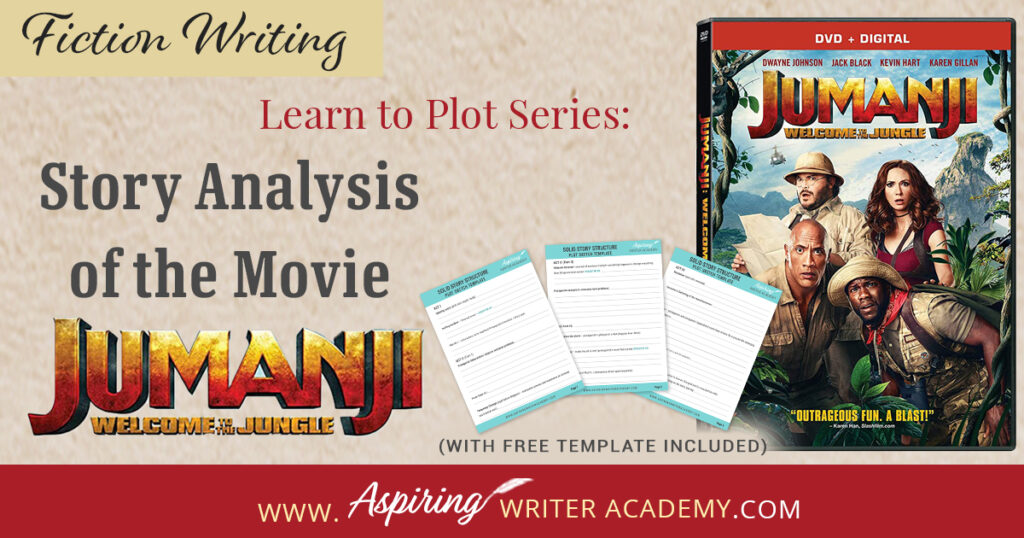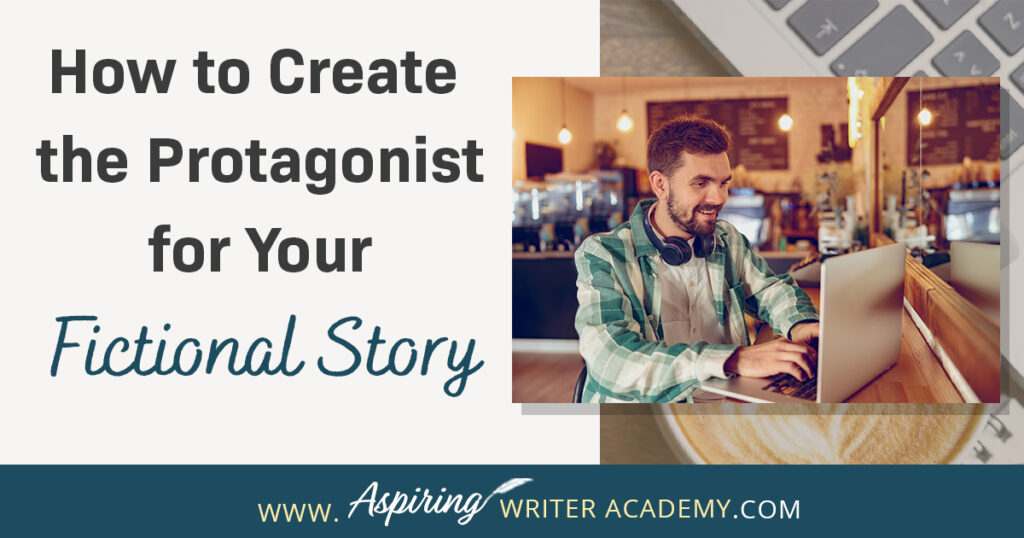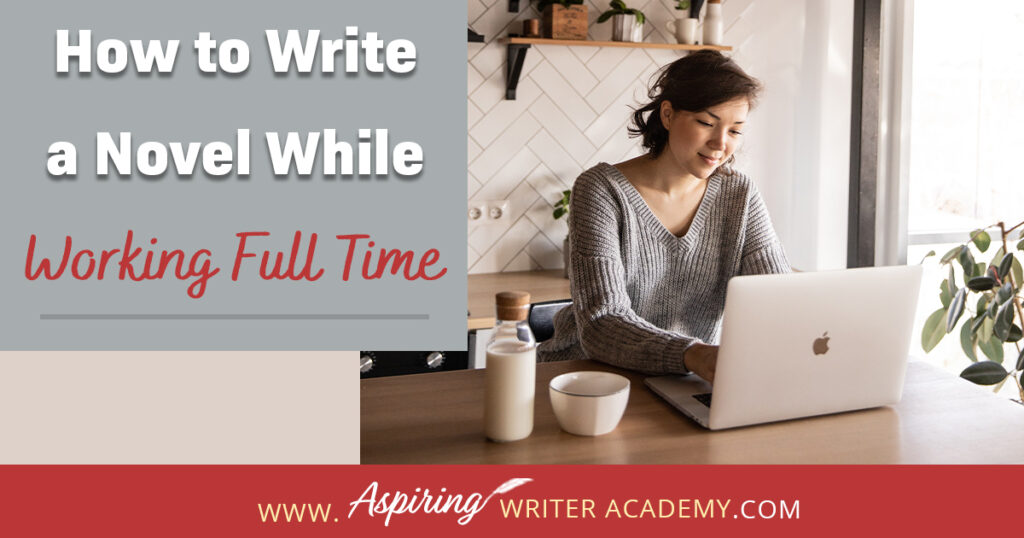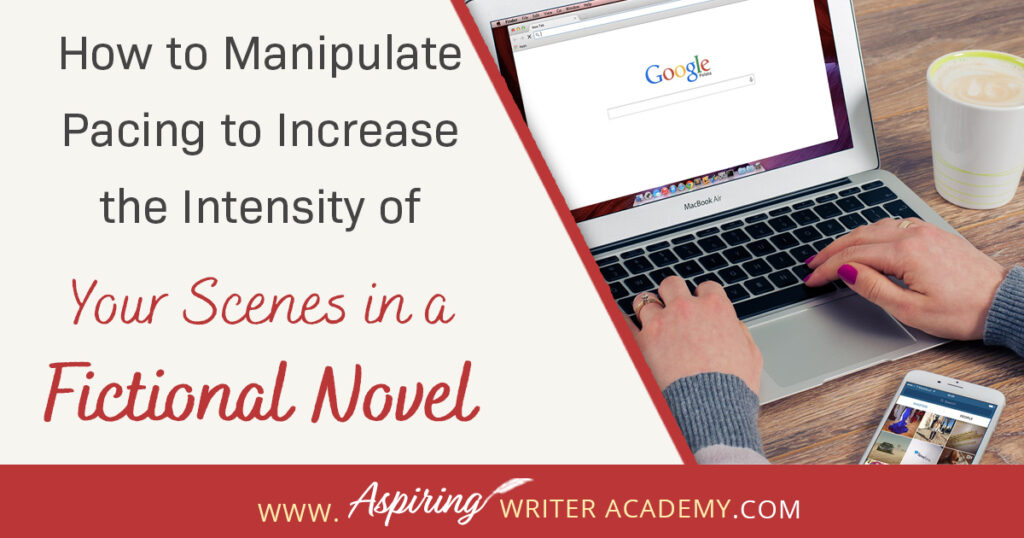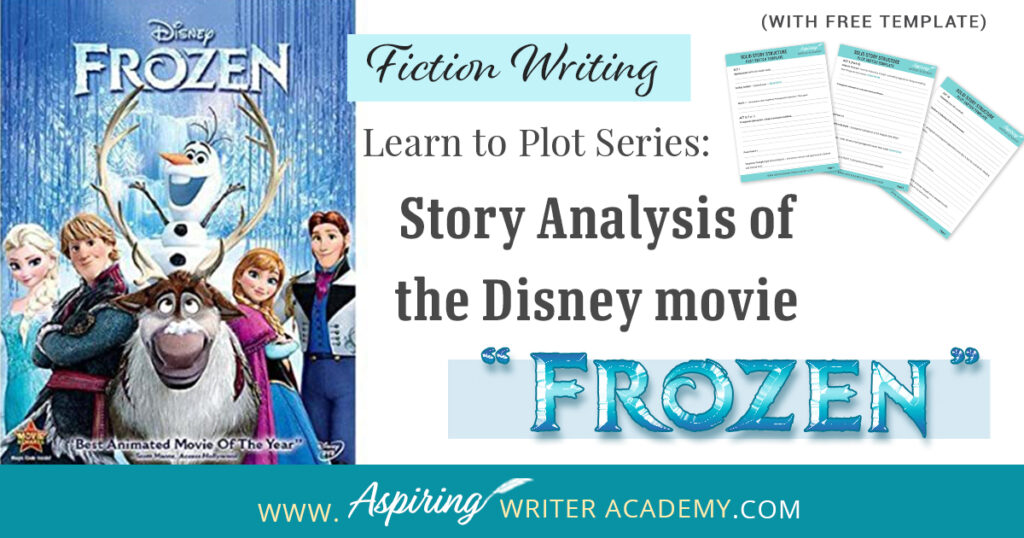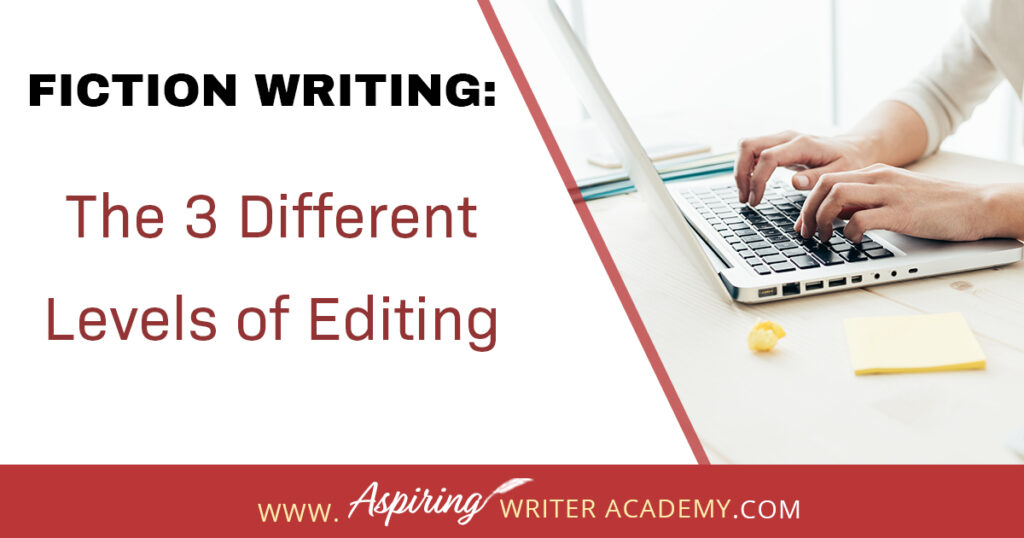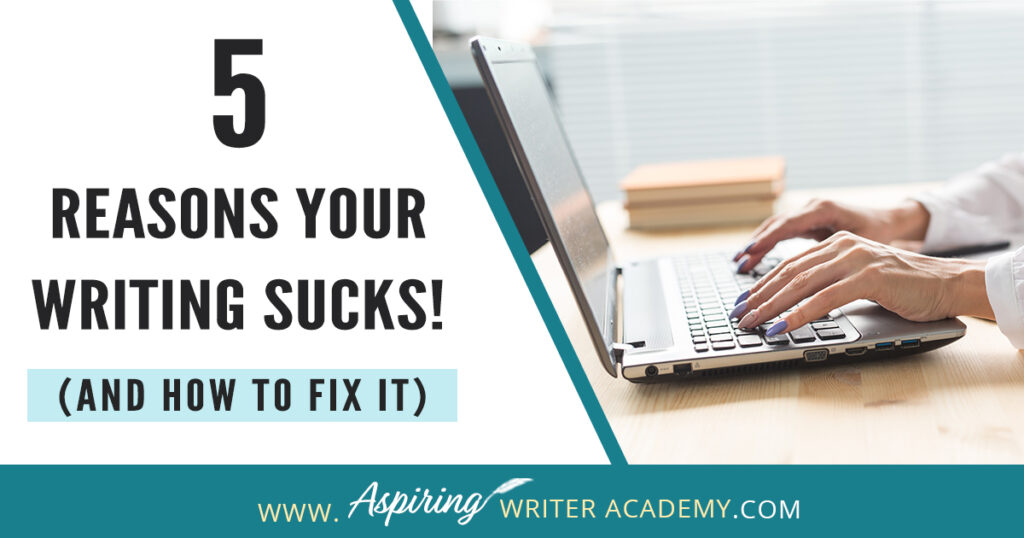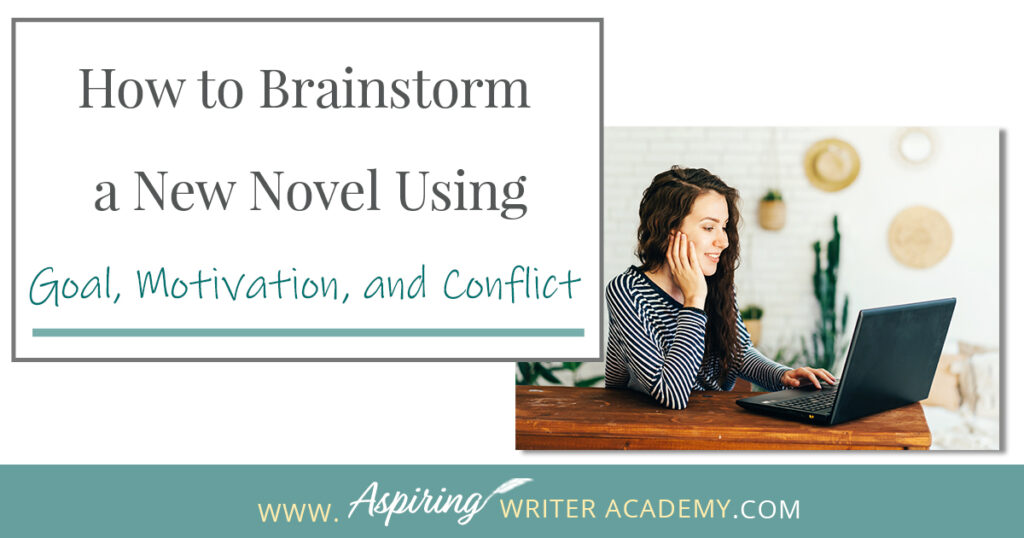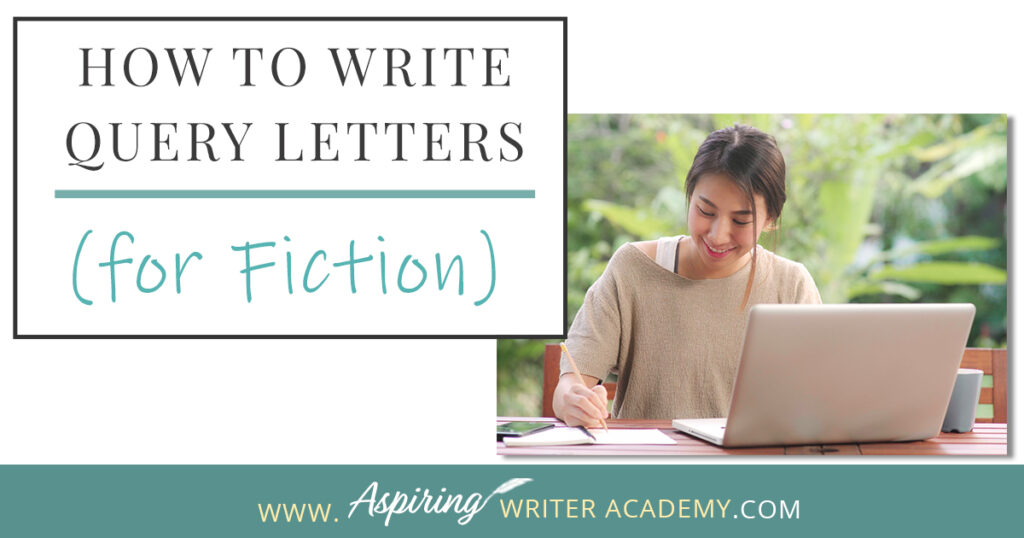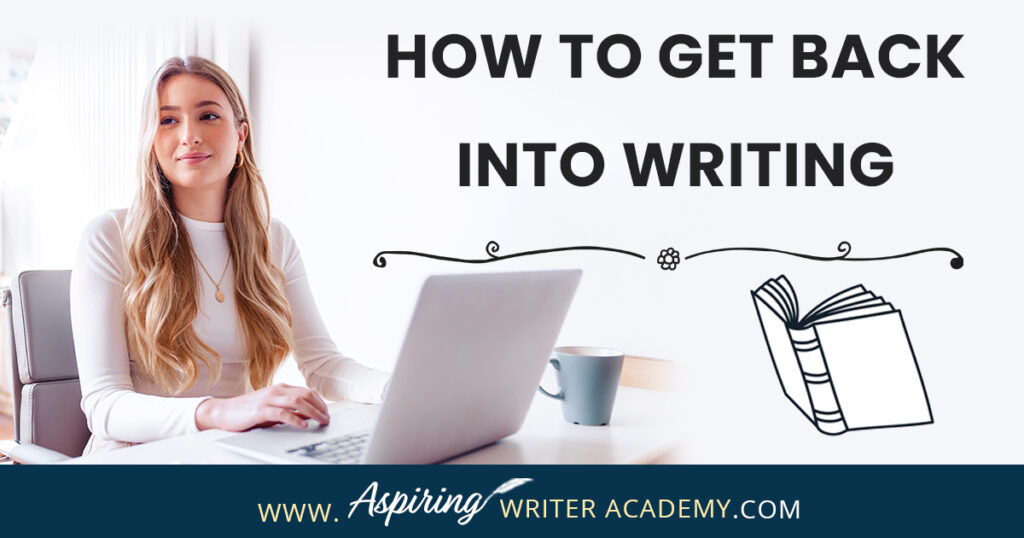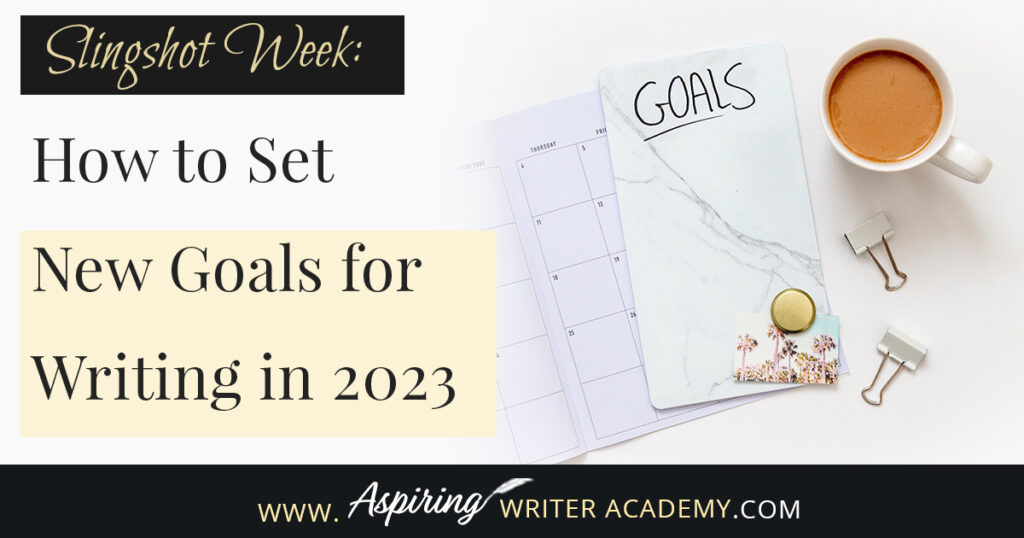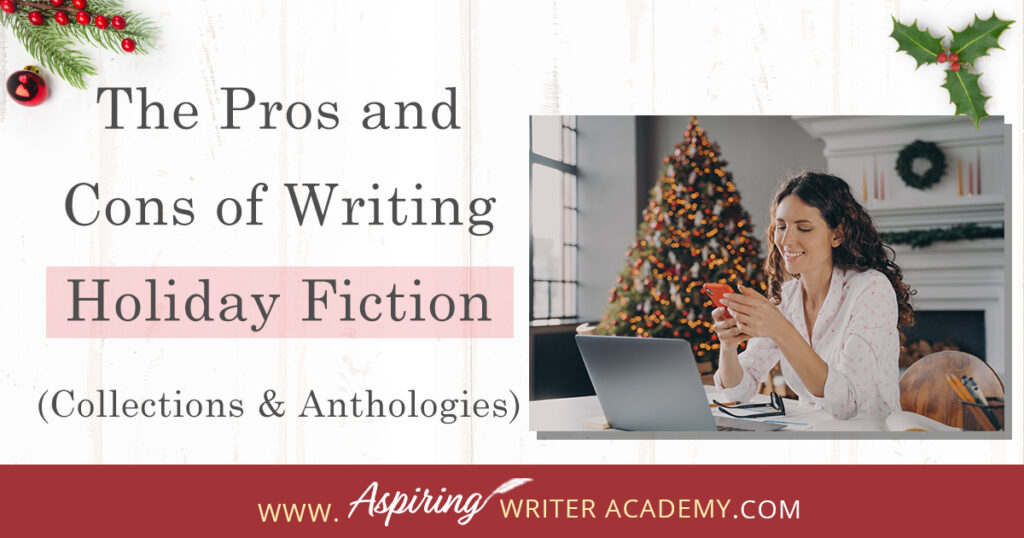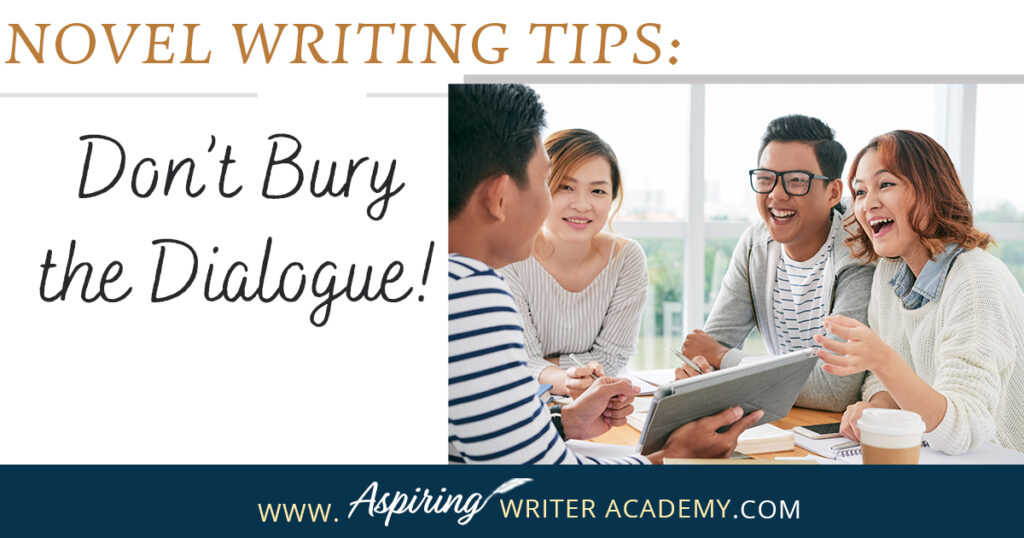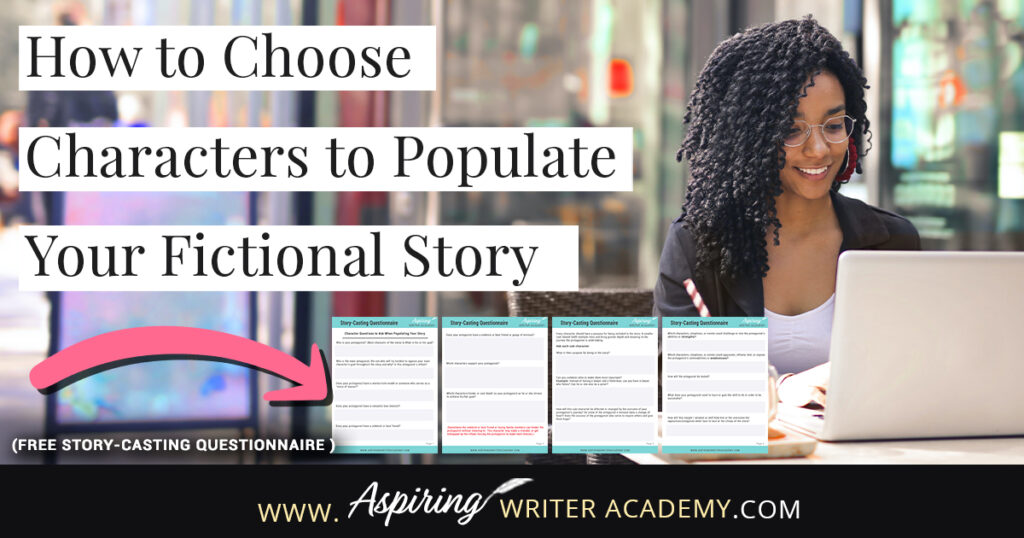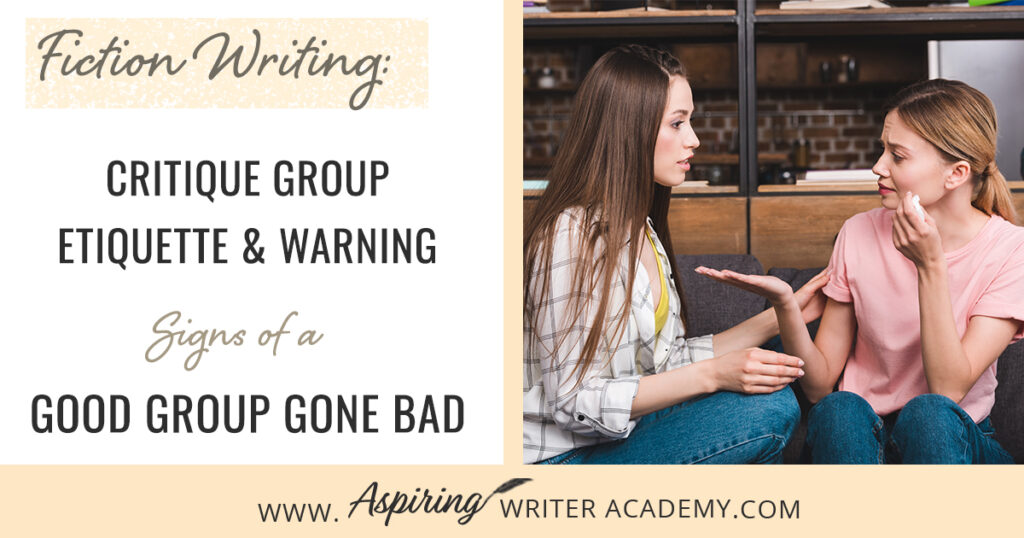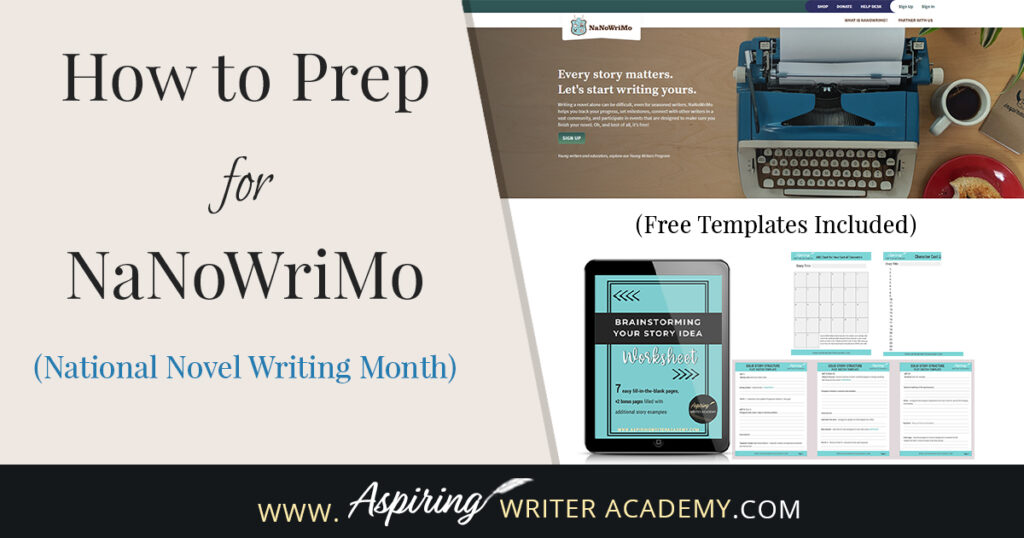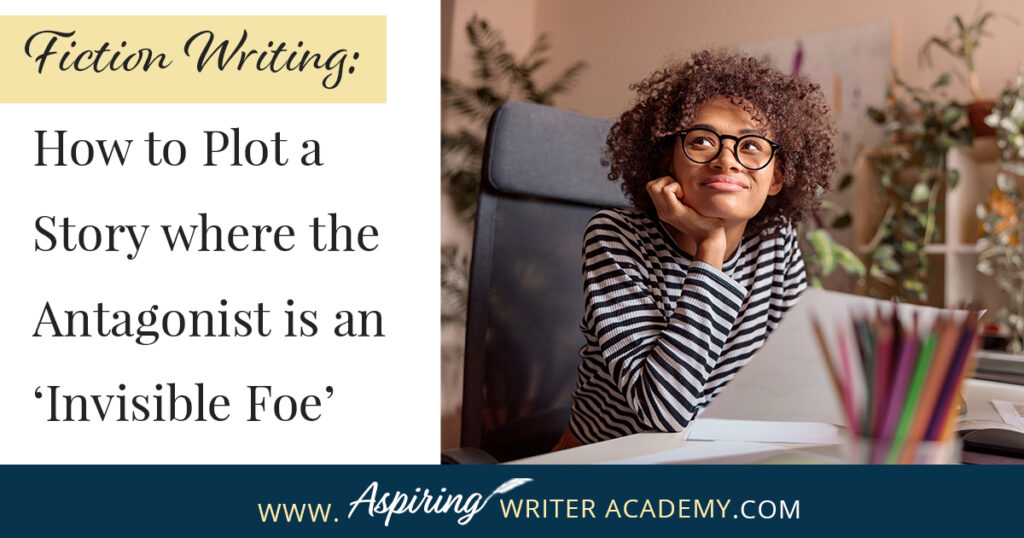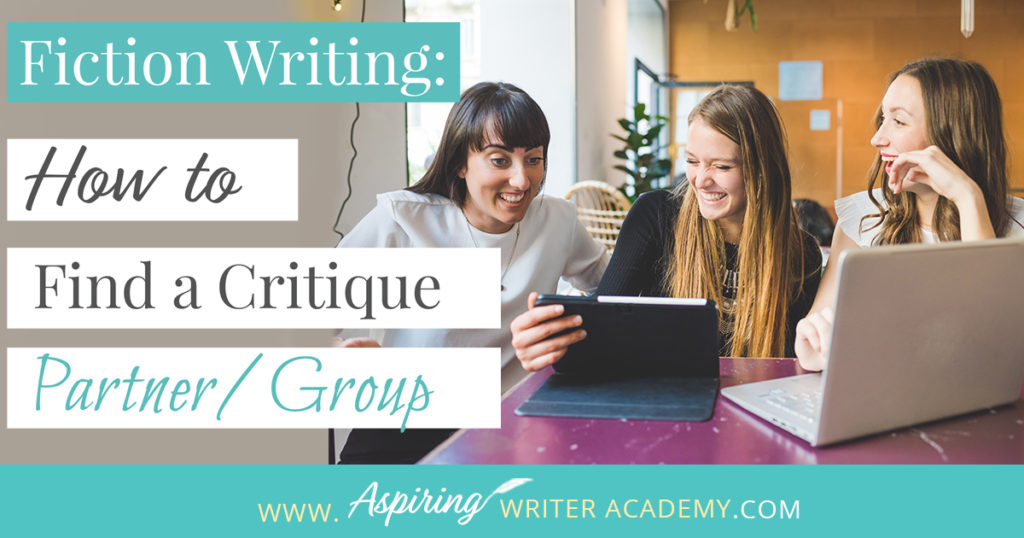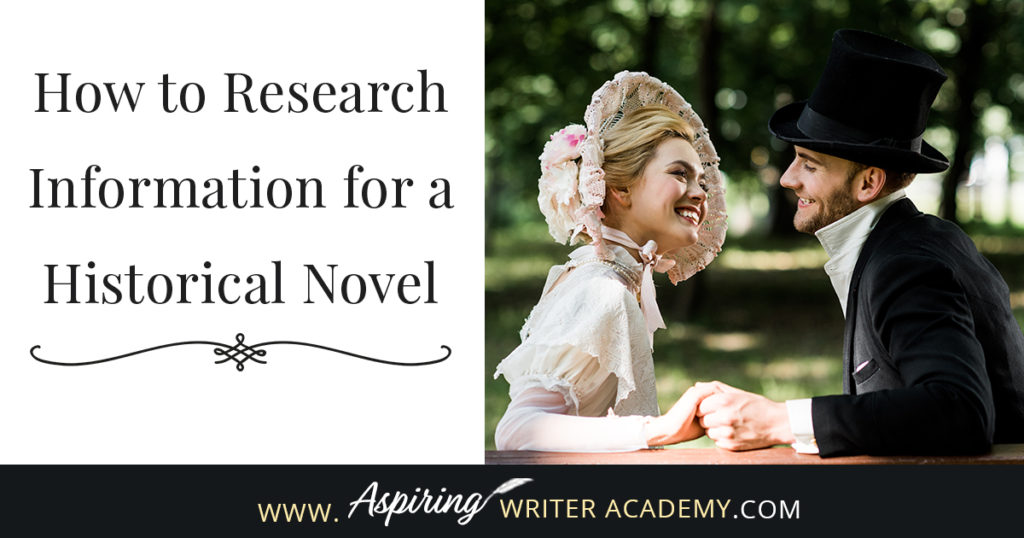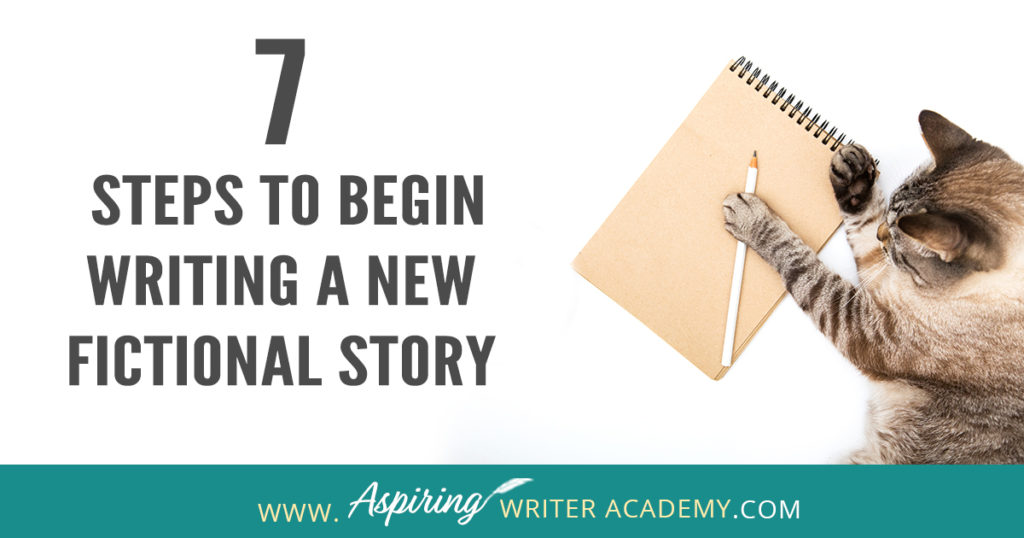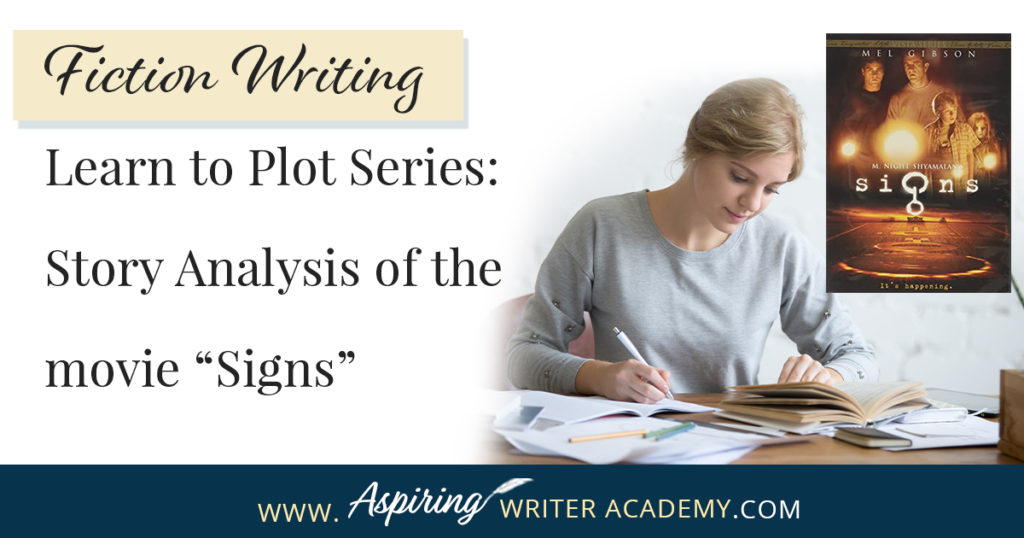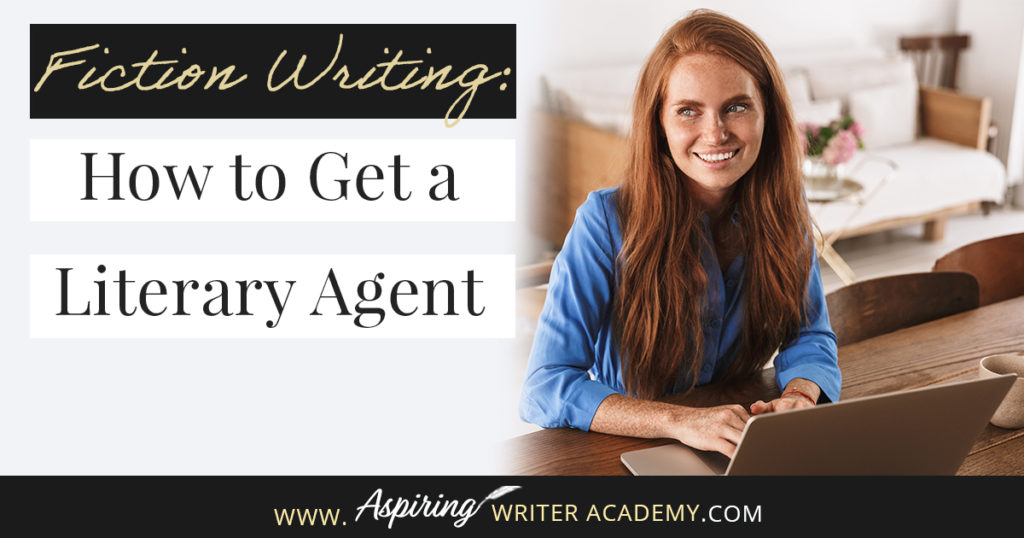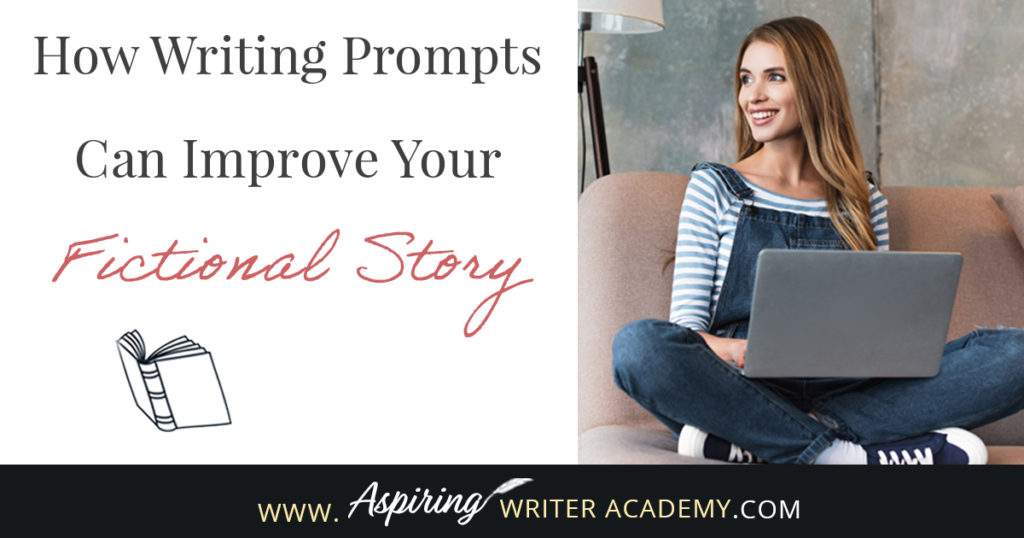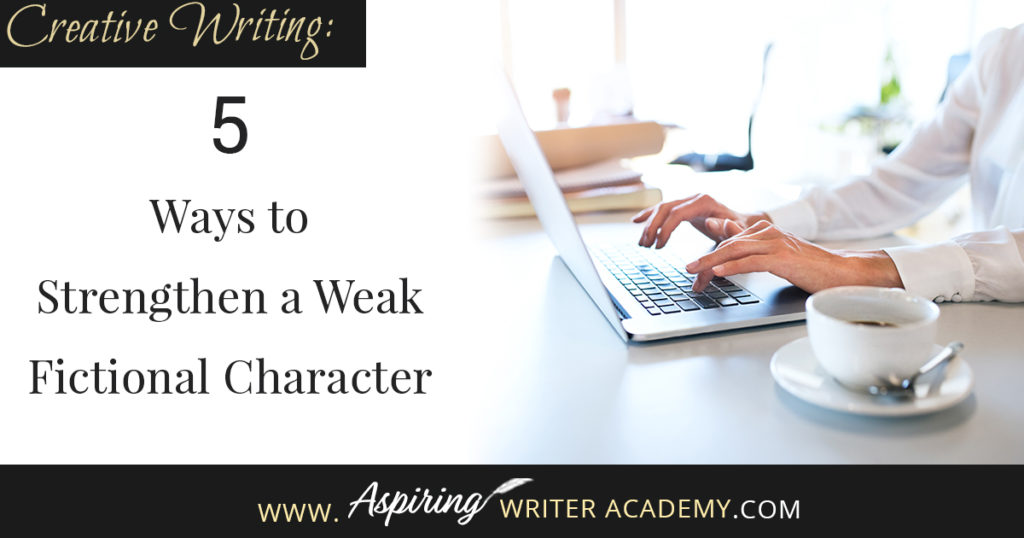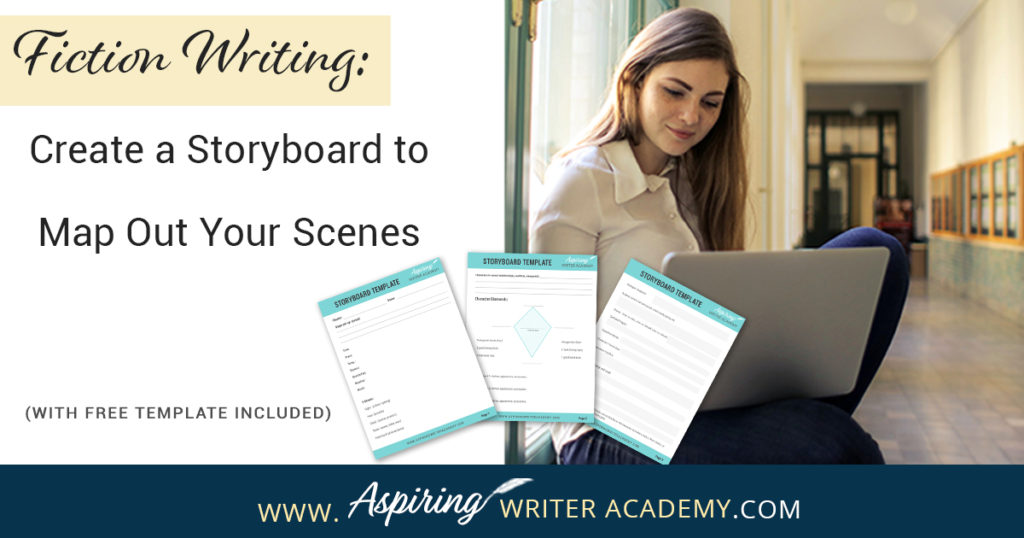Posts Tagged ‘Darlene Panzera’
How to Write Act III and Finish Your Fictional Story in 5 Steps
What is included in Act III of a Fictional Novel?
In Act III, new information is revealed, prompting the protagonist to make a decision to regather the team or needed resources in preparation for the climax where there will be a face-to-face confrontation with the antagonist or villain, leading to the story resolution.
In our post, How to write Act III and Finish Your Fictional Story in 5 Steps, we simplify the entire process and help you bring your story to a satisfying conclusion.
Structuring Act II (Part 2) for Maximum Impact: How to Keep Readers Engaged
When using the 3-Act-Structure in fiction writing, Act I begins the story, and Act III contains the story ending. But what happens in the middle of the story? Are there specific turning points that should be included?
In Structuring Act II (Part 2) for Maximum Impact: How to Keep Readers Engaged, we cover the key components of the second half of Act II, from the Midpoint Reversal to Plot Point II, to help you create a memorable fictional story to keep readers engaged and turning pages.
Read MoreStructuring Act II (Part 1) for Maximum Impact: How to Keep Readers Engaged
When using the 3-Act-Structure in fiction writing, Act I begins the story, and Act III contains the story ending. But what happens in the middle of the story? Are there specific turning points that should be included?
In Structuring Act II (Part 1) for Maximum Impact: How to Keep Readers Engaged, we cover the key components of the first half of Act II from the Inciting Incident to the Novel Midpoint to help you create a memorable fictional story to keep readers engaged and turning pages.
Read MoreHow to Create Antagonists Who Are Not Villains
A good fictional story will follow the journey of a main character (protagonist) who is trying to achieve a specific goal. The opposition, (or antagonist), will try their best to stop the main character from achieving that goal. The question is why?
What if each point of view is equally valid? What if the antagonist is not a villain?
In our post, How to Create Antagonists Who Are Not Villains, we show you how to write realistic conflict that will intensify your fictional novel.
Read MoreHow to Use Setting to Intensify Your Fictional Scenes
While it is important to focus on the characters and plot of your fictional story, how much attention do you give to the setting? Do you use the weather to depict mood a little too often? Are your scene details randomly inserted without any real purpose or meaning?
In How to Use Setting to Intensify Your Fictional Scenes, we help you create unique settings that work on multiple levels to enhance the scene, reveal your character’s personality, and build intensity into each story conflict.
Read MoreLearn to Plot Fiction Writing Series: Story Analysis of the movie “Jumanji: Welcome to the Jungle”
The best way to learn story structure is to analyze good stories. Can you readily identify each plot point in every movie you see or book you read? Or do terms like ‘inciting incident,’ ‘midpoint reversal,’ and ‘black moment’ leave you confused?
In our Learn to Plot Fiction Writing Series: Story Analysis of the movie “Jumanji: Welcome to the Jungle” we show you how to recognize each element and provide a Free Plot Template so you can draft satisfying, high-quality stories of your own.
Read MoreHow to Create the Protagonist for Your Fictional Story
Are you interested in writing a novel but struggle with a story idea or how to develop your main character? What should your character look like? What factors should you consider when creating their personality? How does the story influence character and character influence story?
In our post, How to Create the Protagonist for Your Fictional Story, we lead you step-by-step in the development of a main character your readers will relate to, root for, and enjoy.
Read MoreHow to Write a Novel While Working Full Time
Writing a novel while working full time or raising small children or caring for aging parents is no small feat. So how do you do it? How do you find time to write when your schedule is already filled? How do you make forward progress without feeling overwhelmed?
In our post, How to Write a Novel While Working Full Time, we give valuable tips and resources to help you balance your work schedule with your writing so you can finally finish that coveted manuscript.
Read MoreHow to Manipulate Pacing to Increase the Intensity of Your Scenes in a Fictional Novel
Are there sections in your story that are moving too slow? Do you feel like your scenes are not climatic enough? With the right techniques, you can use pacing to slow a story down or to speed a story up, depending on what is required for each scene. What you do not want, is to have the wrong pacing at the wrong time.
Follow along as we show you How to Manipulate Pacing to Increase the Intensity of Your Scenes in a Fictional Novel to help you write a novel that your reader can not put down.
Read MoreLearn to Plot Fiction Writing Series: Story Analysis of the Disney movie “Frozen”
The best way to learn story structure is to analyze good stories. Can you readily identify each plot point in every movie you see or book you read? Or do terms like ‘inciting incident,’ ‘midpoint reversal,’ and ‘black moment’ leave you confused?
In our Learn to Plot Fiction Writing Series: Story Analysis of the Disney movie “Frozen” we will show you how to recognize each element and provide you with a Free Plot Template so you can draft satisfying, high-quality stories of your own.
Read MoreFiction Writing: The 3 Different Levels of Editing
What is the best way to edit a manuscript? Do you even know where to start? Are you familiar with the difference between revisions, line edits, and copy edits?
In our post, Fiction Writing: 3 Levels of Editing Your Story, we discuss the various phases of editing with checklists to help you get started so you can make your novel the best it can be!
Read More5 Reasons Your Writing Sucks! (And How to Fix It)
Have you submitted your manuscript to multiple publishing houses only to receive a slew of rejections? Have the reviewers of your self-published book been less than kind? Do your critique partners suggest your story needs help but do not offer any suggestions on how to fix the problem?
In our post, 5 Reasons Your Writing Sucks! (And How to Fix It), we help you identify areas that may be weak, and list the steps you can take to make your story better.
Read MoreHow to Brainstorm a New Novel Using Goal, Motivation, and Conflict
Looking for a new story idea? Before you can sit down and start writing a work of fiction, you will need to brainstorm three key elements:
– What is your character’s Goal? (What does he want?)
– What is this character’s Motivation? (Why does he want it?)
– What is the Conflict your character will face? (What is stopping him from getting it?)
In our post, How to Brainstorm a New Novel Using Goal, Motivation, and Conflict, we show you how to create a working outline to help get your story started!
Read MoreHow to Write Query Letters (for Fiction)
Do you have a finished novel? Are you interested in pitching your story idea to an agent or editor? The first step is to put together a query letter, the first part of your book proposal. But what goes into a query letter? Do you include a back cover blurb? A list of comparable books?
In How to Write a Query Letter (for Fiction), we discuss line by line each part of a query letter for your best chance of attracting the attention your novel deserves.
Read MoreHow to Get Back into Writing
If you are a writer who meets every deadline and keeps your production schedule flourishing at peak level through holidays, sickness, and other hard, challenging time periods, then my hat is off to you! Great job!
For others, that masterful feat is not so easy.
If you have slacked off from writing for any reason, we hope How to Get Back into Writing can give you a PLAN to get back in the game!
Read MoreSlingshot Week: How to Set New Goals for Writing in 2023
Do you need to recharge after the holidays? Are you looking forward to setting new goals for the coming year? Or at least the next 90 days? The week between Christmas and New Year’s is the perfect time to take a deep breath and reevaluate where you are at in your writing journey and where you want to be.
In Slingshot Week: How to Set New Goals for Writing in 2023 we offer tips on how to use this week to your advantage to help you succeed in the coming year!
Read MoreThe Pros and Cons of Writing Holiday Fiction (Collections & Anthologies)
During the holiday season you have probably seen advertisements for a multitude of ‘Holiday Book Collections.’ Readers love these collections, not just to put them into the holiday spirit, but because they can usually get several stories for a reduced rate. Authors also love these collections because the group promotions can help launch their book onto bestseller lists.
The Pros and Cons of Writing Holiday Fiction (Collections & Anthologies) helps you decide if joining in on a collection is the right choice for you!
Read MoreNovel Writing Tips: Don’t Bury the Dialogue!
When writing the first draft of a fictional novel, authors may write fast, without giving much thought to format or style issues when it comes to dialogue. However, during the revision phase, it is important to look at each line to ensure the conversations between characters have the greatest impression upon readers.
In Novel Writing Tips: Don’t Bury the Dialogue! we show you how to make your character’s speech stand out for clarity, maximum impact, and stylistic effect.
Read MoreHow to Choose Characters to Populate Your Fictional Story
When starting to write a novel, what do you do first? Create characters or a story idea? It’s kind of like the infamous chicken and the egg question. Starting either way can be fine. But at some point, you need to figure out—who are going to be the characters in this story?
In How to Choose Characters to Populate Your Fictional Story, we discuss the different roles characters can play to create a story readers will love. Free Story-Casting Questionnaire included.
Read MoreFiction Writing: Critique Group Etiquette & Warning Signs of a Good Group Gone Bad
Are you looking to join a critique group and wonder if it will be the right fit for you?
Or have you been in a critique group for a while, but doubt whether the feedback is helpful?
Worse, are you a writer who has suddenly found themselves stuck in a toxic critique group due to changes within the group dynamic?
In Fiction Writing: Critique Group Etiquette & Warning Signs of a Good Group Gone Bad, we discuss the good, the bad, and the ugly to help you get the best feedback on your work.
How to Prep for NaNoWriMo (National Novel Writing Month)
During the month of November, thousands of writers will attempt to write a 50,000-word novel in 30 days. But what exactly is NaNoWriMo and where can you sign up? Can someone really write a novel in 30 days? How can an aspiring writer prepare for such an endeavor both personally and professionally?
In our post, How to Prep for NaNoWriMo (National Novel Writing Month), we discuss the basics of the free challenge as well as helpful tips to make your new writing project a success.
Read MoreFiction Writing: How to Plot a Story where the Antagonist is an ‘Invisible Foe’
Plotting a fictional novel may seem easy when the antagonist your main character is fighting against is a formidable person or a savage shark or beast. But what if the opposition in your story is a force of nature like an approaching storm, or if the storm is within the mind of your main character, or perhaps in the shape of a horrific disease?
See how we break down the structure for such stories step by step in Fiction Writing: How to Plot a Story where the Antagonist is an ‘Invisible Foe’.
Read MoreFiction Writing: How to Find a Critique Partner/Group
Do you have someone you trust to critique your work and give you valuable feedback? Someone who can point out inconsistencies with point-of-view, make suggestions for plot points, and offer tips to strengthen character motivation?
In our post, Fiction Writing: How to Find a Critique Partner/Group, we discuss how to connect with others, various ways a critique group can be run, and other considerations to ensure you bring out the best in each other’s writing!
Read MoreHow to Research Information for a Historical Novel
If you are interested in writing historical fiction, you may be wondering—how do you research a historical era? Where do you go to learn about the customs, currency, weapons, mode of transportation, style of dress? What kind of names, food dishes, or jobs were popular back then? Are there websites with this information?
In our post, How to Research Information for a Historical Novel, we give you several valuable resources to find the information you need to write a realistic, historical tale!
Read More7 Steps to Begin Writing a New Fictional Story
Are you interested in writing a fictional story but do not know where to begin? Do you start with characters, setting, research, or a plot? How do you create deadlines or calculate wordcount? How do you break an idea down into chapters and scenes? How do you set up a working manuscript?
Do you wish you could see how a published author prepares to write a new book? Follow along as we discuss the 7 Steps to Begin Writing a New Fictional Story so you can start writing your own story with ease.
Learn to Plot Fiction Writing Series: Story Analysis of the movie “Signs”
The best way to learn story structure is to analyze good stories. Can you readily identify each plot point in every movie you see or book you read? Or do terms like ‘inciting incident,’ ‘midpoint reversal,’ and ‘black moment’ leave you confused?
In our Learn to Plot Fiction Writing Series: Story Analysis of the movie “Signs” we will show you how to recognize each element and provide you with a Free Plot Template so you can draft satisfying, high-quality stories of your own.
Read MoreFiction Writing: How to Get a Literary Agent
If you have finished your first novel, you may be thinking about publication and how to acquire a literary agent. But are you truly ready to pitch to an agent? Do you have a website and a thriving social media platform? Have you researched which agents accept manuscripts in your genre? Do you know how to put together a book proposal?
In our post, Fiction Writing: How to Get a Literary Agent, we discuss each step you should take when seeking representation for your finished novel.
How Writing Prompts Can Improve Your Fictional Story
Some writers may love writing prompts while others think they are a waste of valuable time. Time better spent working on their story.
But what if a few quick specific writing prompt sessions could help you brainstorm plot holes, deepen point-of-view, sketch upcoming scenes, and supercharge character dialogue?
In How Writing Prompts Can Improve Your Fictional Story, we show how these fast sprints can boost motivation, improve writing skills, and enhance your fictional novel.
Read MoreCreative Writing: 5 Ways to Strengthen a Weak Fictional Character
Do you have trouble writing strong fictional characters?
Perhaps you have been told that your protagonist or antagonist or a sub-character is weak, that they need more motivation. Perhaps the character doesn’t have a strong enough story goal, or enough personality or maybe the character isn’t actively driving the story forward.
How can you “fix” a weak character and make him worthy? Follow along as we discuss, Creative Writing: 5 Ways to Strengthen a Weak Fictional Character in the post below.
Read MoreFiction Writing: Create a Storyboard to Map Out Your Scenes
What is the first step to writing a scene?
While some writers just wait to see what comes to mind, it is helpful for most writers to have a plan. Figuring out the scene details and objectives on a “Storyboard” beforehand allows you to write your scenes with ease.
If you are unsure how to craft a vibrant, compelling, purpose-filled scene, follow along as we help you with the framework in our post, Fiction Writing: Create a Storyboard to Map Out Your Scenes, with our Free Template.

